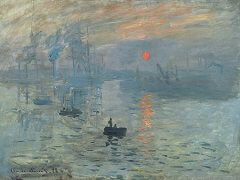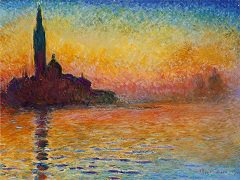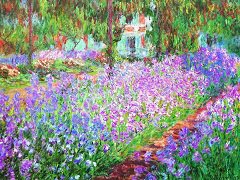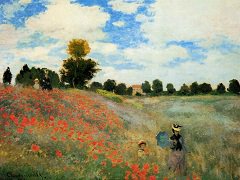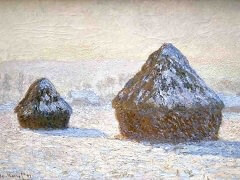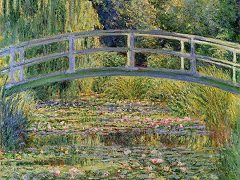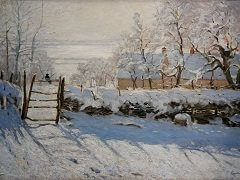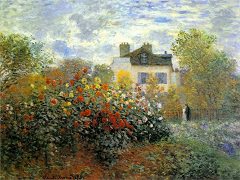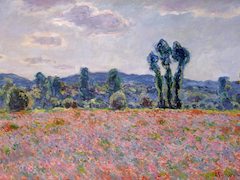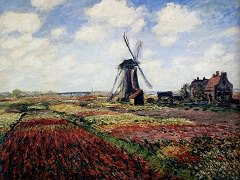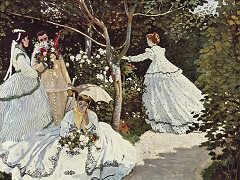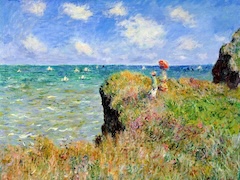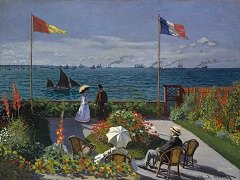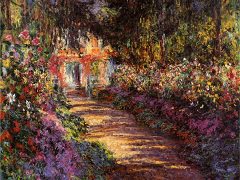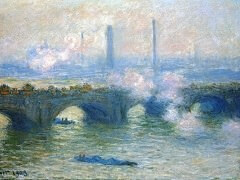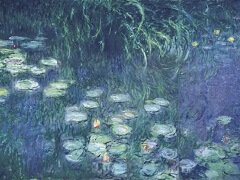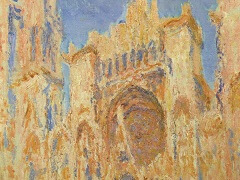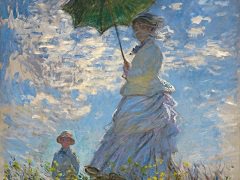Haystack at Giverny, 1886 - by Claude Monet
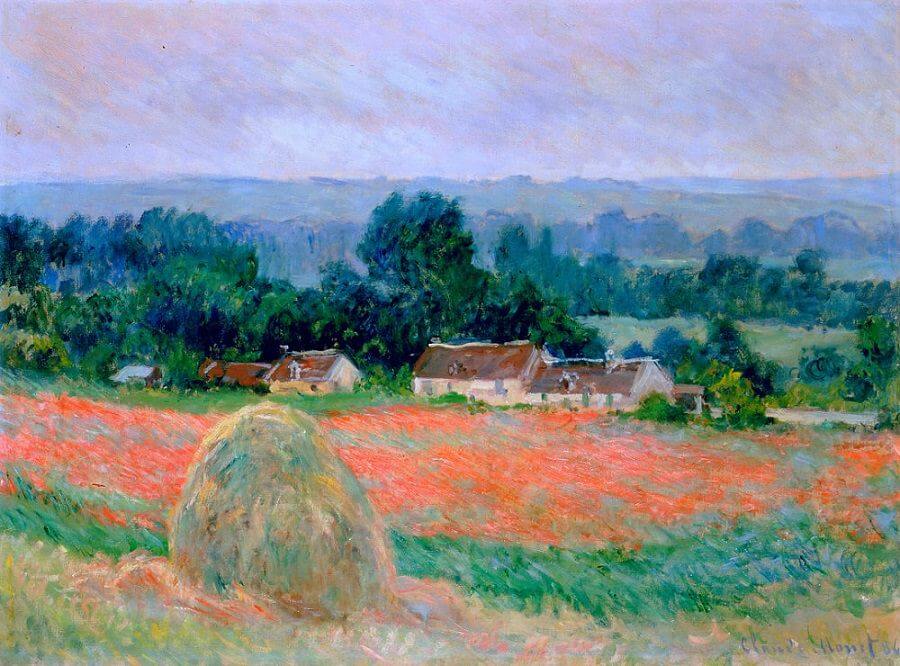
Haystack at Giverny, 1866, with the brilliant use of color suggestive of the rolling fields of poppies and the strand horizontal planes with vertical accents, typifies Monet's treatment of his landscape subjects at this time. The scenery of Giverny was to provide him with the perfect quality of light and the topographical framework to evolve his continuing treatment of light and atmosphere. It gave him a subject that he was to return to in the 1890s with his famous haystack series, dedicated to the visualization of reflective light through different periods of the day.
The main focus of Monet's Haystacks paintings was to alternate between different seasons and positions to give different color balances on the same object, which intrigued artist Monet. Perhaps the choice of Haystacks as an object for this sort of experimentation was done because Claude required something that was relatively three-dimensional and did not have too much external detail that might complicate the findings of his studies of light and season. Haystacks in just one of several exciting topics that Claude Monet experimented with great length during his career.

